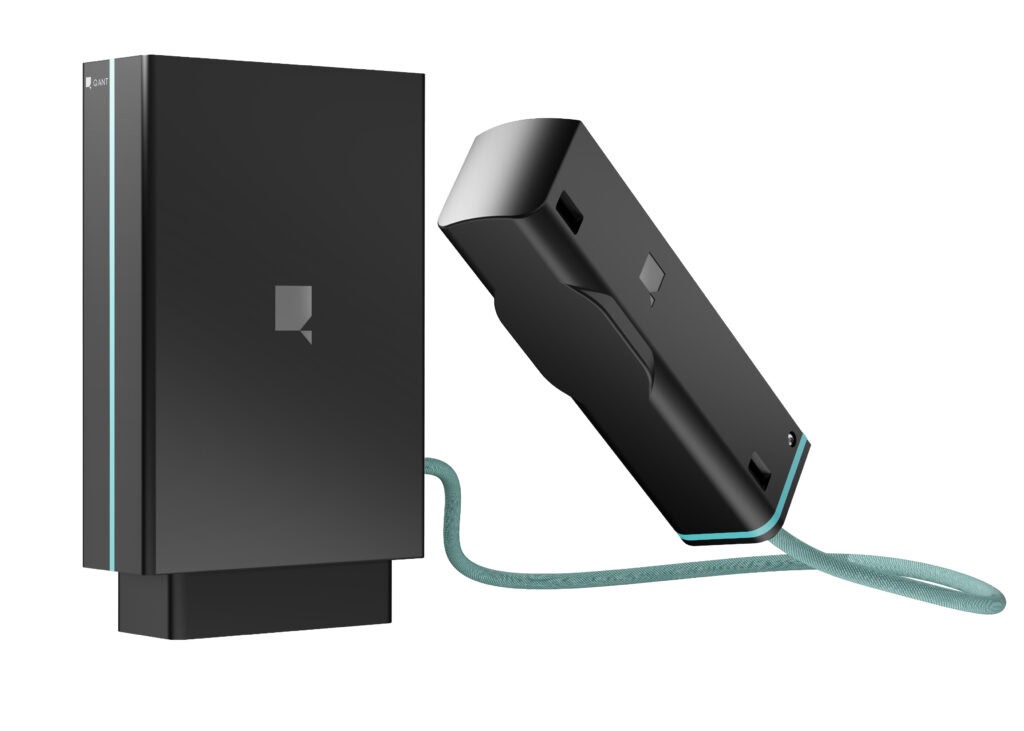Startseite » Magnetometer
The Q.ANT magnetometer enables precise measurement of human bio signals for a new class of human-machine-interface, allows new thinking for medtec applications and creates new industrial sensor approaches.
Q.ANT’s magnetometer is the world’s first compact sensor that can be utilised under ambient conditions – capable to even measure magnetic fields activated by neural signals of human muscles in the range of below 20 picotesla. High-precision magnetic field measurements for medical and industrial applications can thus be rethought.
The Q.ANT benefits
The system consists of electronic components and fibre-coupled sensor heads, which are placed at the actual measuring point. This significantly simplifies integration into applications, and makes the sensor robust and mobile enough to be used and applied in everyday situations.

Native Sensing with integrated cognitive reasoning is set to open a new landscape of interfaces between humans and machines. The proof of functionality was showcased with the detection of magnetic muscle signals for future prosthesis control at Hannover Fair 2024.
| Size electronics | Size sensor head | Weight | Energy consumption | Interface | Resolution | Sensor size | Dynamic range | Laser wavelenght | Frequency bandwidth |
| 160 x 100 x 50 mm | 60 x 40 x 100 mm | 600 gr | 10 W | Ethernet | 20 pT/√Hz | 0.5 x 0.5 x 0.5 mm | 2.7 μT (optional: resonance locking) | 520 nm | 3 kHz |
A wide range of applications in consumer electronics are around the corner, where our contactless Native Sensor will boost the performance and usability to a new level.
Located at the heart of the sensor, becomes sensitive to magnetic fields by inserting an adjustment in the atomic lattice, called an NV doping
bring the NV dopings into a magnetic field-sensitive state
acts on the sensor
shines on the NV diamond and causes the NV doping to fluoresce with red light
Changes when the external magnetic field changes
Captures the fluorescence light
Processing of photodetector data
User-friendly display of the signal
Our magnetometry is based on nitrogen-vacancy (NV) centers in diamonds, which serve as extremely sensitive medium for magnetic fields.
This NV center is controlled and read out via on the photonic level. Combined with control electronics and analysis software, we realize a compact, ultra-sensitive sensor system.
Robert Rölver
VP Native Sensing, Q.ANT



Stuttgart / Hanover, April 18, 2024 – Human-Interface-Technologies have the potential to revolutionize entire industries. With its magnetic field sensor, the German photonic deep-tech scale-up [...]
Fully integrated quantum magnetic field sensor brings reading of human muscle signals within reach Small, lightweight and highly sensitive: with a magnetic field sensor the [...]
After three years of joint developments, the publicly BMBF-funded project MiLiQuant – Miniaturized Light Sources for Quantum Technology – expired. Led and coordinated by Q.ANT, [...]

VP Native Sensing
Let’s explore and discuss the impressive potential of our magnetic field sensor.
Q.ANT GmbH
Handwerkstr. 29
70565 Stuttgart
Germany